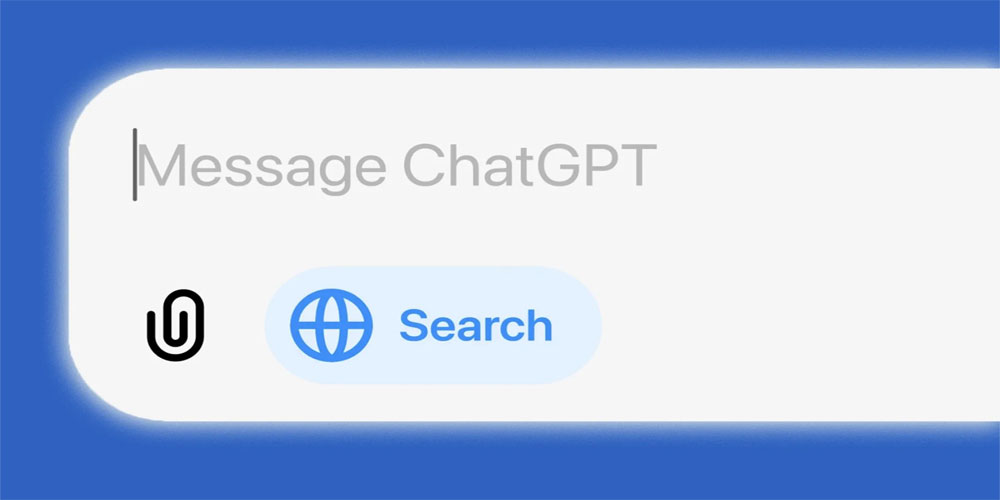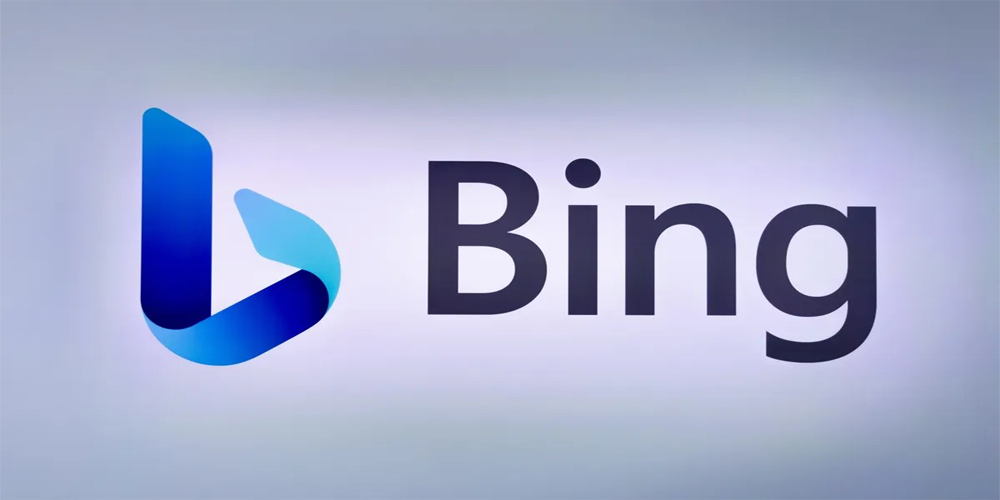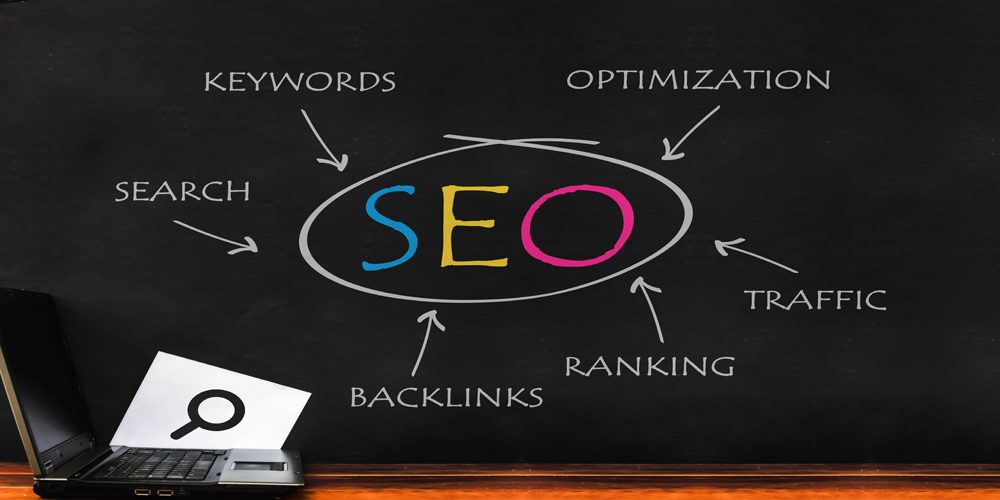Are People Clicking Links in ChatGPT Search?

Are People Clicking Links in ChatGPT Search? A report from Modern Retail shows that people who use ChatGPT and Google Gemini for quick summaries also click the links these tools provide. This is important for marketers, as it suggests that AI-driven search may change product discovery and online traffic. The Search Engine Journal is reporting that while these numbers are self-reported and lack broader data, they offer insight into how consumers engage with AI search results and how brands can benefit. What Brands Are Observing Viv, a period care brand, noticed a trend last summer when its website traffic increased by 400%. Marketing director Kelly Donohue linked this to the rise of AI tools. This spike coincided with a study in Environment International that found harmful heavy metals in popular tampon brands. Viv’s blog posts about product safety gained visibility as people searched for safer options. The increased traffic resulted in more sales, with Viv reporting a 436% rise from these AI-driven referrals. This indicates that users actively clicked through to learn more and make purchases. Viv’s experience highlights the need for brands to create comprehensive content that answers people’s questions. Donohue pointed out that platforms like ChatGPT prefer articles with context, sources, and thorough explanations over keyword-heavy material. Donohue explained, “These AI tools are specifically scraping through content, but looking for more than just keywords. They’re looking for a cohesive response that they can give to people that includes context, sources, and background.” In response, Viv focused on transparency and product safety. By creating educational articles, Viv built consumer trust and improved its visibility in AI recommendations. The effort paid off, Donohue added: “We ended up selling out of about six months of tampon inventory in three weeks, driven by Google’s AI-powered recommendations.” Other Brands Report Similar Trends Joe & Bella is an adaptive apparel brand that has gained more visitors from ChatGPT recommendations. It makes clothing for older adults and people with mobility challenges, and during the holiday season, it saw an increase in visitors and purchases. Jimmy Zollo, Joe & Bella’s co-founder and CEO, tells Modern Retail: “I don’t really know how or what they would have typed or asked ChatGPT to have found us over the holidays.” Zollo speculated that the company’s ongoing investment in SEO and its blog content likely played a role. These reports show that people engage with links in AI-generated search results rather than just reading summaries. Dan Buckstaff, chief product officer at Spins, compares this to the early days of SEO. Buckstaff said: “Similar to 15 years ago when we were questioning how SEO worked, we’re left with questioning how brands can benefit from AI environments.” Spins’ 2025 Industry Trends Report indicates that consumers are increasingly using AI tools like ChatGPT and social media platforms like TikTok to discover products. While advertising on these AI tools is still developing, brands with strong, organized content are benefiting. Looking Ahead Consumers are increasingly clicking on links in AI-driven search results, especially younger audiences like Gen Z, who use AI tools for product discovery. For brands like Viv, this change is crucial for content creation. Donohue said: “These searches are top of mind for us now, and the way we’re writing our blogs and the content on our website can play a huge part in people finding us through AI tools.” The key takeaway is to focus on straightforward, educational content to improve your chances of being recommended by AI-powered search tools.
Grove England Perfume & Fragrance Collections

Welcome to Grove England Perfume & Fragrance CollectionsA new client has arrived with Direct Submit. Grove England who offer a range of natural fine fragrances, luxury bath and body products, and much more. Their Grove England Website encourages visitors to discover more about GROVE England’s story and explore their range of luxury bath products. Bringing a little more beauty, care, and elegance into your everyday life’s. Combining natural fragrances with artistry to bring joy to everyday moments with collections that are beautifully natural and luxuriously practical. The client has asked us to help them promote their services across the UK. Why? Because Direct Submit will create a bespoke SEO plan to meet the needs of your business and utilise a full range of professional SEO services to enhance your online visibility and give you a competitive edge. We also offer a range of SEO Packages that represent great value for money while delivering you expert SEO Services. Looking specifically for local SEO to market your business? We offer effective & affordable specialist Local SEO services that will position your site to experience exponential growth in traffic. Call Direct Submit today on 0800 669 6848 for Your FREE Local SEO Estimate and find out how we can help expand your business and bring you, new customers. We deliver more customers — not just more website traffic!
LSI Keywords & SEO

Understanding LSI Keywords & SEO Search Engine Optimisation or SEO is key for any website that wants to be noticed. Content marketing is very important, but knowing how search engines operate can help your content reach a bigger audience. This is where LSI keywords come in handy. When you understand and use LSI keywords correctly, you can improve your website’s ranking in search results and attract more visitors. LSI keywords, known as Latent Semantic Indexing keywords, are words that link to the main topic of your content. They are different from regular keywords because they focus on the meaning and how words relate to each other. By using LSI keywords naturally in your text, you help search engines understand your topic better. This helps your content connect with the right audience. LSI keywords help search engines understand your content as a person would. They show how different terms are connected. This results in more accurate and relevant search results. The Evolution of LSI Keywords from the 1980s to Today LSI keywords come from the search for information. This idea began with a method named Latent Semantic Analysis (LSA) in the 1980s. LSA helped find hidden meanings in a large set of documents. It did this by looking at how words connect to each other. Susan Dumais, a pioneering computer scientist, was important in creating LSA. Her research made better systems that search for information by examining how words relate to each other. This work led to the development of what we call LSI keywords now. As time passed, LSA and LSI started to be used in many more areas, especially in SEO. Search engines began to understand what people mean and want when they search. Because of this, using LSI keywords is now very important for website owners. They want to boost their search rankings. Debunking Myths: What LSI Keywords Are and Aren’t There are several myths about LSI keywords. It’s important to understand that LSI keywords are not about tricking search engines or hiding keywords. They are related terms that provide extra context to your content. LSI keywords are not a new type of keyword. They are identified using natural language processing (NLP) tools. These tools analyze how words and phrases connect in a specific context. You can view them as extra words that enhance the clarity of your content. In the end, LSI keywords make your content better for both search engines and people. When you pay attention to related terms and use natural language, it becomes easier to read. This can help you appear more often in search results. The Role of LSI Keywords in Google’s Algorithm Google’s search system keeps changing. It aims to understand what people mean and want when they search. LSI keywords play a big role in this. They help Google learn more about your web pages. When Google finds words that are connected to your main keywords, it believes your content is better and more important. This can help you rank higher, bring in more visitors, and create a stronger online presence. How Google Interprets LSI Keywords for Better Search Results Google’s algorithm uses LSI keywords. These keywords help Google understand what words mean and how they relate to each other in searches. Instead of only searching for exact words, Google considers the context of the words. For example, if someone searches for “coffee,” Google can find related words like “beans,” “brewing methods,” “caffeine,” or “espresso.” This helps Google show more relevant results. A page about “coffee brewing guides” can appear in the search results, even if it doesn’t say “coffee” many times. When you add LSI keywords to your content, you help Google know what your page is about. This increases your chances of appearing in searches that matter. It can also help you reach your target audience. The Difference Between LSI Keywords and Traditional Keywords Traditional keywords are still very important for SEO. However, they don’t always reflect how people really talk or what they actually want when they search. These keywords usually focus on the exact phrases that users type into search engines. LSI keywords, which stand for Latent Semantic Indexing keywords, focus on the broader idea. They look for related keywords instead of only exact matches. This helps provide better context to the main topic. As a result, search engines like Google can better grasp the content’s meaning, making it more relevant to users. LSI keywords are important for your main keywords. They explain what your topic is and help search engines figure out what users need. This results in better search results. Implementing LSI Keywords in Your SEO Strategy Integrating LSI keywords into your SEO strategy should be simple. It is not just about adding random words. You should focus on making your content flow smoothly and ensuring it makes sense. Once you find the LSI keywords that go well with your target keywords, use them in your content in a natural way. This can boost your SEO. It also makes your content clearer and more helpful for people. Identifying LSI Keywords for Your Content Identifying LSI keywords is important for getting good results. There are several tools and methods to help you find these useful keywords. Here’s how you can do LSI keyword research: By using these LSI keyword research methods, you can create a strong list of related terms. This will help make your content better and increase its visibility in search results. Best Practices for Integrating LSI Keywords into Web Pages Once you find good LSI keywords, it is important to add them correctly to your web pages. Here are some best practices you should follow when using LSI keywords: By using these best practices, you can easily add LSI keywords to your web pages. This will help your site show up better in search engine results. It will also make the user experience better. The Impact of LSI Keywords on Content Quality and SEO Using LSI keywords can boost the quality of
Google Shopping Ranking Factors

Google Shopping Ranking: Key Factors Retailers Must Know A recent study analyzing over 5,000 Google Shopping keywords has unveiled critical insights into the factors that influence higher rankings. Conducted by Jeff Oxford, Founder of 180 Marketing, the research highlights trends that eCommerce businesses can use to boost visibility in Google’s free Shopping listings. The findings reveal that pricing, customer reviews, backlinks, and website authority all play significant roles in determining rankings. Amazon’s Dominance in Google Shopping Amazon continues to dominate Google Shopping, ranking in the #1 position for 52% of searches. In comparison, Walmart holds a modest 6%, while Home Depot accounts for just 3%. This commanding lead underscores Amazon’s strong presence in the eCommerce space, driven by its established authority and expansive product range. Beyond Amazon’s impressive performance, the study found that well-established brands with higher website authority tend to outrank competitors. This reinforces the importance of building a trusted brand and robust online presence to compete in Google Shopping. Key Factors Influencing Google Shopping Rankings The research identified several key trends that distinguish higher-ranking product pages from the rest. Below are the most impactful factors: 1. Backlinks: The Power of Referring Domains Backlinks, or external links pointing to a product page, emerged as a critical ranking factor. Product pages in the top two positions had significantly more backlinks than their lower-ranking counterparts. However, the study revealed a surprising insight: 98% of product pages analyzed lacked any backlinks at all. This presents a significant opportunity for eCommerce stores to outperform competitors by investing in link-building strategies. By earning high-quality backlinks, businesses can boost their website authority and improve rankings in Google Shopping. 2. Customer Reviews: A Key to Visibility Customer reviews were found to have a strong correlation with higher rankings. Product pages featuring reviews consistently performed better than those without. Additionally, stores with average star ratings below 3.5 struggled to rank in top positions. Positive reviews not only build trust with customers but also signal quality to Google’s algorithm. To leverage this factor, retailers should encourage customers to leave reviews and focus on maintaining a high average rating. Implementing strategies like follow-up emails after purchases or incentivizing reviews can help build this critical ranking asset. 3. Pricing: Competitive Pricing Wins Pricing also emerged as a major factor influencing rankings. Products priced below the category average tended to rank higher. This suggests that competitive pricing is crucial for gaining visibility in Google Shopping. Retailers should regularly analyze competitors’ pricing to ensure their products remain attractive to budget-conscious shoppers. However, it’s essential to balance lower pricing with profitability to avoid unsustainable margins. On-Page SEO: Meta Descriptions and Keywords Among on-page SEO factors, meta descriptions had the strongest correlation with higher rankings. Product pages that included exact-match keywords in their meta descriptions consistently outperformed those that didn’t. This indicates that well-crafted metadata can enhance both organic search visibility and Google Shopping performance. While keyword usage in title tags and H1 headers showed some correlation, their impact was less significant compared to meta descriptions. Retailers should focus on optimizing their metadata by including relevant keywords and compelling descriptions that encourage clicks. Structured Data: Mixed Results Structured data, often touted as essential for SEO, showed mixed results in the study. Surprisingly, product structured data had little to no correlation with higher rankings. Even Amazon, the leader in Google Shopping, doesn’t utilize structured data on its product pages. However, pages using review structured data did perform better, suggesting that highlighting customer feedback through schema markup can have a positive impact. Retailers should consider implementing review structured data to enhance their visibility in search results. Shipping, Returns, and Website Quality Google evaluates stores on several metrics, including shipping, returns, and website quality. The study found that retailers with “Exceptional” or “Great” scores in shipping and returns were more likely to rank in the top 10 positions. This reinforces the importance of providing fast shipping, hassle-free returns, and an overall excellent customer experience. Retailers should prioritize these areas by streamlining fulfillment processes, offering competitive shipping rates, and creating transparent return policies. These efforts not only improve rankings but also foster customer loyalty. Key Takeaways for Retailers Based on the findings, the following strategies can help retailers improve their Google Shopping rankings: Final Thoughts: Correlation vs. Causation While the study provides valuable insights, it’s important to remember that correlation does not imply causation. Retailers should test changes thoughtfully and focus on delivering value to customers. Ultimately, success in Google Shopping lies in balancing traditional SEO tactics with a customer-first approach. By implementing these strategies, eCommerce stores can enhance their visibility, attract more shoppers, and compete effectively in Google Shopping’s dynamic landscape.
Google Criticizes Bing for New Homepage

Bing’s New Homepage Parisa Tabriz, the security leader for Google Chrome, has criticized Microsoft for a new strategy involving Bing’s search interface. In a post on X (formerly Twitter), Tabriz denounced Microsoft’s decision to imitate the design of Google’s homepage, labeling it “another tactic in its long history of tricks to confuse users and limit choice.” She concluded her statement with sharp words: “New year; new low, Microsoft.” The Search Engine Journal is reporting that this criticism comes after Bing introduced a controversial feature that mimics Google’s user interface when users search for “Google” or “Google.com.” Microsoft’s New Bing InterfaceWhen users not signed into a Microsoft account search for Google on Bing, they see a page that looks a lot like Google’s homepage. The page has a search bar in the center, a banner with animated figures similar to Google Doodles, and a message saying, “Every search brings you closer to a free donation. Choose from over 2 million nonprofits!” This message links to the Microsoft Rewards catalog, where users can donate their reward points to nonprofit organisations. The design makes it hard to see Bing’s branding by scrolling the page slightly down to hide the Bing logo. Users may only realise they’re still using Bing when they scroll or interact with the page further. Industry observers like Windows Latest and The Verge note this move appears targeted at users setting up new Windows PCs, who might initially search for Google through Microsoft Edge’s default Bing search engine. The design change could potentially retain users who might otherwise switch to Google’s search platform. Many of these users search for Google to switch their search engine. Microsoft’s change aims to keep users from leaving Bing. While tech-savvy users may notice this strategy, it might persuade less experienced users to keep searching on Bing, helping Microsoft retain more users. This latest tactic highlights the ongoing competition between Microsoft and Google in the search engine market. Microsoft has employed various strategies to promote its Bing search engine and Edge browser, including pop-ups and changes to Chrome’s download pages. In parallel, Google has encouraged users to download Chrome and set Google as their default search engine, though its methods haven’t included outright deception. Google’s and Microsoft’s rivalry remains heated. As of December, Google’s search engine maintained a dominant global market share of 89.74%, while Microsoft’s Bing held 3.97%.
Understanding SEO Packages in the UK

Understanding SEO Packages in the UK In today’s digital world, it’s very important to have a strong online presence for success. SEO services can help with this. They use methods like keyword research and search engine optimisation. These strategies make your website easy to find. This attracts more potential customers and helps your business grow steadily. Search engine optimisation, or SEO, is key in digital marketing, especially for UK businesses. It works to boost where your website shows up on search engines like Google. This makes it easier for potential customers to find you. An effective SEO strategy uses several methods to improve how easily people can find your website. This can bring in more organic traffic, meaning more visitors to your site. The aim is to change these visitors into loyal customers. With a strong SEO package, you can stand out from competitors and help your business succeed in the UK market for a long time. The Role of SEO in Today’s Digital Landscape Why is it important to have a strong online presence? A lot of people use search engines to find products and services. This means that if people can find your website easily, it will help you reach your business goals. That’s where SEO is important. It helps you improve your online presence. This can attract organic traffic. These are valuable visitors who are searching for what you offer. When your search engine rankings improve, people can find your website more easily. This leads to more visitors who are interested in what you offer. As a result, you can boost conversions and work towards your business goals. How SEO Packages Can Transform Your Online Visibility Imagine your website always on the first page of search results for important keywords. A full SEO package can make this a reality. By using techniques like keyword optimisation, content marketing, and improved website design, SEO increases your online visibility. This drives more qualified visitors to your site. SEO is not the same for every business. Good SEO agencies tailor their services to meet your unique needs. They focus on making your website appealing to your target audience. This helps you achieve your goals. Case studies show how strong effective SEO can be. Many businesses in various fields have experienced big increases in website traffic, getting leads, and making sales after using personalized SEO plans. Tailoring SEO Strategies to Your Business Needs To achieve great positions in search engine results, you must understand your target audience and your competition. You should also be aware of the changes in the world of SEO. That’s why having a personalized plan is very important. A strong SEO strategy goes beyond just simple steps. It involves doing keyword research, optimizing your pages, building links, and making content that people enjoy. All these tasks should be done with care to match your business goals and target market. Identifying Key SEO Objectives for UK Businesses Defining your SEO goals is an important first step for a good digital marketing plan. What do you want to achieve with SEO? Do you want to improve brand awareness? Would you like to increase website traffic? Or are you looking to get more online conversions? After you find your main goals, you can change your SEO efforts to fit them. For example, if your goal is to improve online visibility, then you should pay attention to keyword research, link building, and getting better at technical SEO. To improve user experience and increase conversions, it’s essential to make your website’s design, navigation, and content easier to use and more engaging. Custom SEO Solutions vs. One-Size-Fits-All Packages Navigating SEO can seem tough. There are many agencies offering different packages. However, you should keep in mind that your business is unique. Your SEO plan should reflect that special quality. Pre-packaged SEO solutions might seem appealing. However, they often lack the personal touch needed to get great results. That’s why custom SEO solutions are important. These tailored strategies are created by SEO experts. They focus on your business goals, understand your target audience, consider your competition, and analyze your website traffic. When you team up with SEO experts who truly care about your needs, you can get the most out of SEO. This can help you grow in a strong and lasting way. Components of Effective SEO Packages Effective SEO packages use complete strategies. Every part plays a key role in making your website stand out and reach the results you want. When you choose an SEO company, ensure their packages offer a full approach. You should focus on both on-page and off-page optimization. On-page optimization means enhancing your website’s content and layout. Off-page optimization includes building links and boosting your online reputation. Technical SEO is also vital. It ensures that your website is easy to navigate and works well on mobile devices. If needed, local SEO is important too. It helps you show up better in local search results. On-Page SEO Essentials for UK Websites On-page SEO focuses on making your website better so it can rank higher in search results. This involves adjusting your website’s content, layout, and HTML to meet the needs of your target audience. A good user experience is also important. To do on-page SEO right, start by researching keywords. This helps you discover the words that your target audience uses. After that, you can add these keywords into your website’s content, meta descriptions, and title tags. It’s also important to arrange your website in a clear way. Make it easy for visitors to get around, by having links that help them find what they need. When you pay attention to good on-page SEO, you create a website that search engines and your target audience will appreciate. This can boost your chances of showing up on the first page of search results. The Importance of Off-Page SEO in Gaining Visibility On-page SEO focuses on making better features for your website. Off-page SEO deals with things outside your site that
WordPress Backup Plugin Vulnerability

WordPress Backup Plugin Vulnerability Exposed A high severity vulnerability in a popular WordPress backup plugin allows unauthenticated attackers to exploit the flaw. The vulnerability is rated 8.8 on a scale of 0.0 to 10. UpdraftPlus: WP Backup & Migration PluginThe vulnerability affects the popular Updraft Plus WordPress plugin, installed in over 3 million websites. Updraft Plus comes in a free and paid version that allows users to upload backups to a user’s cloud storage or to email the files. The plugin allows users to manually backup the website or schedule it for automatic backups. It offers a tremendous amount of flexibility of what can be backed up and can make a huge difference for recovering from a catastrophic server issue and is also useful for migrating to a different server altogether. Wordfence explains the vulnerability: “The UpdraftPlus: WP Backup & Migration Plugin plugin for WordPress is vulnerable to PHP Object Injection in all versions up to, and including, 1.24.11 via deserialization of untrusted input in the ‘recursive_unserialized_replace’ function. This makes it possible for unauthenticated attackers to inject a PHP Object. No known POP chain is present in the vulnerable software. If a POP chain is present via an additional plugin or theme installed on the target system, it could allow the attacker to delete arbitrary files, retrieve sensitive data, or execute code. An administrator must perform a search and replace action to trigger the exploit.” The Updraft Plus changelog seems to minimize the vulnerability, it doesn’t even call the update a security patch, it’s labeled as a “tweak.” From the official Updraft Plus WordPress plugin changelog: “TWEAK: Complete the review and removal of calls to the unserialize() PHP function allowing class instantiation begun in 1.24.7. (The final removal involved a theoretical security defect, if your development site allowed an attacker to post content to it which you migrated to another site, and which contained customised code that could perform destructive actions which the attacker knew about, prior to you then cloning the site. The result of this removal is that some search-replaces, highly unlikely to be encountered in practice, will be skipped).” Updraft Plus Vulnerability PatchedUsers are recommended to consider updating their installations of Updraft Plus to the latest version, 1.24.12. All versions prior to the latest version are vulnerable.
Local SEO Ranking Factors & 2025

The Evolution of Local SEO Towards 2025 The Growing Importance of Local Search in Digital Marketing Over the past decade, local search has significantly increased in prominence within digital marketing. Consumers have shown a clear preference for finding businesses close to their geographical location, turning to search engines for local information more frequently. This uptick underscores the need for businesses to enhance their local SEO strategies, ensuring they stand out in a crowded market of regional competitors. How Local SEO Is Transforming Business Visibility Local SEO isn’t just about appearing in local search results; it’s about being strategically positioned to capture the attention of potential customers precisely when they’re looking for what you offer. An optimised local presence can dramatically improve a business’s visibility, leading to higher foot traffic and increased sales. With features like Google Business Profiles and location-specific keywords, businesses can master the art of appearing relevant and accessible to their target audience. What to Expect in Local SEO Trends for 2025 Looking towards 2025, several key trends are shaping the future of local SEO. Expect to see an increased focus on mobile-first user experiences and enhanced local content creation, reflecting Google’s emphasis on mobile performance and user engagement. Additionally, local voice search is predicted to grow, compelling businesses to optimise for conversational queries. Markedly, the importance of customer reviews and local link building will continue to be paramount, fostering community trust and authority. Transitioning forward, a meticulous focus on Google Business Profile optimisation will be integral in implementing a successful strategy for these emerging trends. 1. Google Business Profile Optimisation Complete and Accurate Business Information Optimising your Google Business Profile (GBP) starts with ensuring your business information is complete and accurate. Providing precise details such as your business name, address, phone number, and website ensures potential customers can easily reach you. Accurate business information also strengthens your credibility and gives search engines reliable data to index, improving your local search rankings. Regular Updates and Posts Regularly updating your GBP is crucial for keeping your audience engaged and informed. Posting updates about new products, services, promotions, or upcoming events helps maintain customer interest and encourages higher engagement. Additionally, frequent posts signal to Google that your business is active and relevant, which can enhance your visibility in local search results. Optimising Business Categories and Attributes Choosing the right business categories and attributes is vital for accurately representing what your business offers. By selecting the most relevant categories, you help Google understand the nature of your business, improving the likelihood of showing up in relevant local searches. Furthermore, specifying attributes such as payment options, wheelchair accessibility, and WiFi availability can cater to specific customer needs and preferences. Brief Transition Optimising your Google Business Profile is a foundational step in increasing your local SEO performance. As we move forward, another critical aspect to consider is maintaining NAP consistency across various platforms and directories. This ensures uniformity and credibility in your business listings, further establishing your presence in local search results. 2. NAP Consistency Across Platforms Importance of Consistent Name, Address, and Phone Number Maintaining uniformity in your business’s Name, Address, and Phone number (NAP) across all online platforms is crucial for enhancing local SEO efforts. Consistency ensures that search engines recognise and trust your business information, which significantly boosts your online presence and credibility. When potential customers find the same NAP details on various platforms, it instils a sense of reliability and professionalism in your brand, encouraging higher engagement and conversions. Managing Citations Across Directories Citations, which refer to mentions of your business’s NAP information on various websites, play a pivotal role in local SEO. Properly managing these citations across multiple directories helps create a cohesive online presence. To achieve this, businesses should regularly audit their listings on key directories like Google My Business, Yelp, and industry-specific platforms. Utilising tools that automate this process can ensure accuracy and save time, mitigating the risk of outdated or inconsistent information. Impact on Local Search Credibility A consistent NAP across all platforms directly influences local search rankings. Search engines favour businesses with uniform listings, as it verifies the legitimacy of the information. This not only enhances your local search visibility but also contributes to appearing in the Local Pack results, which are highly sought after by businesses aiming for local clientele. Accurate and consistent citations build your business’s credibility, as search engines and customers alike trust the integrity of your NAP details. 3. Mobile-First User Experience Mobile Optimisation Requirements for 2025 As we advance towards 2025, the mobile-first approach remains a non-negotiable aspect of local SEO. The rise of mobile searches necessitates that businesses ensure their websites are seamlessly accessible on mobile devices. Key elements to consider include responsive design, intuitive navigation, and adaptive content that fits various screen sizes. Accessibility should be at the forefront to provide uniform, user-friendly experiences for all mobile users. Page Speed and Loading Time Importance The speed at which a web page loads on a mobile device significantly impacts user experience and local SEO rankings. Google prioritises fast-loading websites, making page speed a critical factor. Businesses must focus on optimising images, reducing redirects, and leveraging browser caching to improve load times. Tools like Google’s PageSpeed Insights offer valuable insights and recommendations for enhancing site performance. Mobile-Friendly Design Elements A mobile-friendly website design is integral to retaining visitors and maximising engagement. Essential design elements include clear call-to-action buttons, easy-to-access contact information, and simplified forms. Additionally, optimising for mobile usability involves ensuring that text is readable without zooming, links are easily clickable, and multimedia content is fully functional on mobile devices. A seamless mobile experience not only bolsters user satisfaction but also enhances local search visibility. With these principles in mind, businesses can effectively cater to the growing mobile user base, securing their competitive edge in the local market by 2025. 4. Local Keyword Integration Strategic Placement of Location-Based Keywords Effectively leveraging location-based keywords is crucial for businesses targeting local customers. To enhance local search visibility, it’s important to
Guide to Writing Great Content

Understanding the Essentials of Great Content Creating good content is crucial for content marketing and search engine optimisation. This guide will assist everyone, whether you are an experienced writer or just starting out. You will discover how to make engaging content that catches the eye of your target audience and it will also help boost your online presence and give you real results for your business in the UK. Great content is not just about filling a web page with words. It is about offering helpful, relevant, and interesting information that connects with your target audience. It can teach, entertain, inspire, or solve a problem for readers. When you do this, it builds trust in your brand. When you make great content that resonates with your audience, you can create brand loyalty and gather leads. This, in turn, helps increase sales. Remember, creating great content is an investment. It can provide significant benefits for your business. The Importance of Quality Content in Digital Marketing In digital marketing, having good content is key. It makes your online campaigns work better. Good content draws in and connects with your target audience. This can take your brand higher. When you update regularly, you build a solid online presence, which helps to keep your audience engaged and leads to good results. It also helps in attracting your perfect customers. It does this by telling interesting stories, sharing useful articles, and posting engaging content on social media. It’s key to make content that ranks well in search results. Your content should catch your audience’s attention and leave a memorable impact. Good content helps to build trust and authority for your brand. When you share useful information, you create a stronger bond with your audience. This way, you can become a leader in your industry. Characteristics of Compelling and Engaging Content Creating interesting content is key to catch the attention of today’s online audience. It should give useful information and connect with readers’ feelings. It also needs to provide a good user experience. One sign of good content is its power to make you curious right from the start. An interesting question, a great story, or a strong statement can do this. Good content grabs the reader’s attention and keeps it until the very end. Your main goal should be to create content that strongly affects your audience. It should start conversations, inspire people to take action, and build a connection with your brand. Crafting Your Content Strategy Before you begin your content creation journey, it’s key to have a clear content strategy. A solid strategy acts as a guide for what you do. It helps ensure that all your content aligns with your business goals. Take some time to think about your goals. Find out who your target audience is. Decide on the key performance indicators (KPIs) that will help you measure your success. By creating a clear plan from the start, you can set yourself up for success in content marketing. Identifying Your Target Audience in the UK Knowing your target audience well is important for creating content that connects with them. If you understand what they need and like, you can make helpful content that builds strong relationships. Start by doing some good market research. This will help you learn about your target audience. Find out their age, lifestyle, and online habits. Next, create buyer personas that represent your ideal customers. Doing this will help you know what drives them and the problems they face. To create content that catches the attention of your target audience, you need to understand them better. The more you learn about them, the more you can meet the needs of your customers. This will encourage them to take action. Setting Clear Objectives for Your Content Clearly set goals are very important for a good content plan. When you create specific, measurable, reachable, relevant, and time-based goals for your content, you give clear directions to your work. This helps you track what you get from your investment. To increase brand awareness, drive more traffic to your website, get leads, or boost your sales, it’s important to set clear content goals. These goals will guide your strategy and help you focus on achieving real results. It’s essential to link your content goals to your business objectives. By doing this, every piece of content you create will have a clear purpose. To raise brand awareness, you can create content that people want to share. The important thing is to set goals for your content that are realistic and can be reached. These goals should align with your marketing objectives. The Anatomy of Great Content Great content provides useful information and keeps the reader interested from beginning to end. It combines helpful details with fun writing styles. This makes reading enjoyable and easy to remember. When you understand what makes content great, you can get better at writing. You can write strong pieces that connect with your audience. Creating Attention-Grabbing Headlines In the online world, your headline is your first chance to make a strong impression. It can grab your audience’s attention. A good headline will decide if readers will click to read the whole article or just scroll past it. Here are some more helpful tips: Structuring Your Content for Readability When you create web content, it’s key to ensure good readability. A lot of online readers tend to skim text. For this reason, you should arrange your content to make it simple to read and understand. Shorten long paragraphs into smaller sections. Use headings, subheadings, bullet points, and numbered lists. They make your text more attractive. These tools help people read better. They also let readers look through your content fast and find what they want. It is important to use clear and simple words. Stay away from complicated words, and keep your sentences short. This way, your message will flow better, and it will be easier to understand. When you make readability a focus, your content becomes
Google Reveals Top (US) Searches Of 2024

Google Reveals Top Searches Of 2024Google’s yearly report of top trending searches reveals the most popular keywords and topics across different categories. Based on Google search data, the report offers a glimpse into the topics, events, and figures that defined the year. Sports Searches Key highlights include the World Cup, travel, a renewed love for nature, and virtual adventures. Common themes are sports, entertainment, connection, and comfort. Here’s an overview of top trending searches worldwide and a breakdown of U.S. The Copa América soccer tournament topped the list, followed by the UEFA European Championship and the ICC Men’s T20 World Cup cricket tournament. Copa América.UEFA European Championship.ICC Men’s T20 World Cup.India vs. England.Liam Payne. News Searches In the news category, the U.S. presidential election was the most searched topic worldwide, surpassing interest in the Olympic games, which came in third. Excessive heat and Hurricane Milton also drove significant search interest, ranking as the second and fourth top global news events. U.S. Election.Excessive heat.Olympics.Hurricane Milton. Entertainment Searches In entertainment, veteran comedian and actor Katt Williams topped the global list of most searched actors. Rising stars like Ella Purnell and Hina Khan also earned spots in the top five. Sequels to popular franchises topped movie searches, with “Inside Out 2,” “Deadpool & Wolverine,” and “Dune: Part Two” ranking as the top three. Top Actors: Katt Williams.Pawan Kalyan.Adam Brody.Ella Purnell.Hina Khan.Top Movies: Inside Out 2.Deadpool & Wolverine.Saltburn.Beetlejuice Beetlejuice.Dune: Part Two. Gaming Searches In gaming, New York Times took the top two spots with their popular word and puzzle games. Interesting to note – except for Palworld, all the most searched titles are browser-based games that anyone can play. Games: Connections.Strands.Infinite Craft.Palworld.Sprunki. Lifestyle TrendsAesthetics: Mob wife aesthetic.Nancy Meyers aesthetic.Pillow face aesthetic.Brat aesthetic.Decora aesthetic. Food & RecipesOlympic-themed chocolate muffin recipes topped global food-related searches, while the traditional Chinese treat tanghulu came in second. A viral recipe created by Tineke “Tini” Younger rounded out the top three. Olympic chocolate muffins.Tanghulu.Tini’s mac and cheese.Mama Kelce’s cookie.Dense bean salad. Music TrendsGoogle’s “Hum to Search” feature, which identifies songs based on audio clips, revealed that people had catchy tunes like “Beautiful Things” by Benson Boone and “Crazy Frog” by Axel F stuck in their heads. The sea shanty “Wellerman” also had a resurgence. Most Hummed Songs: Beautiful Things – Benson Boone.Axel F – Crazy FrogWellerman – Santiano.Past Lives – Slushii.Too Sweet – Hozier. Google’s Year in Search 2024 reflects what connected people worldwide over the past year.
